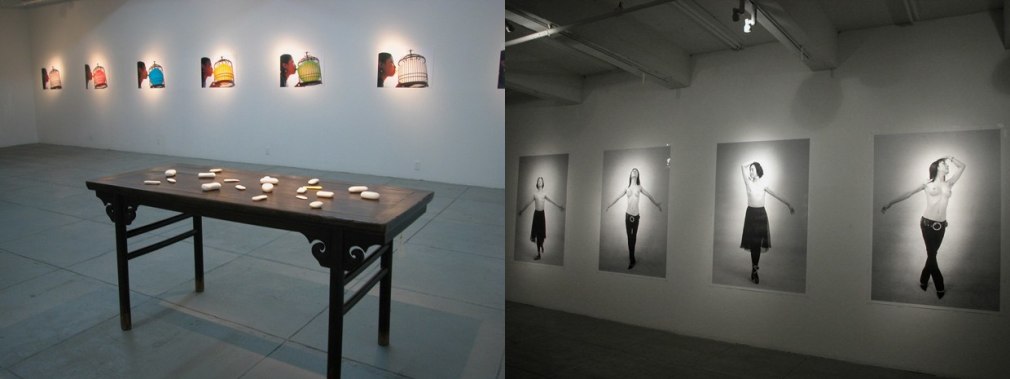Photography and installation art has become an increasingly important medium of self expression among the younger generation of Chinese artists. In Body & Objects, Chambers has selected three such artists, Chu Yun, Jiang Zhi, Tang Yi for our summer show. The use of objects in relation to the body is a common thread found throughout the works of these artists. Objects are used as signifiers that bring meaning and depth to our understanding of our own body and self.
While the rest of us don’t think much of our day to day banal use of a bar of soap, Chu Yun has taken the opportunity to demonstrate that the soap is an interesting object which changes all the time when coming in contact with the body. They are miniature sculptures formed through the process of scrubbing away at the surface of the body. They are what the artist calls, “memorials, or anti-memorials ... as artworks (miniature sculptures made from body, flesh and skin) they are obtained by stopping. If I don’t stop, they will disappear.”
Jiang Zhi’s black and white photographs of two dancers are juxtaposed against one another. The contrast is startling; one is a transsexual with breast implants while the other dancer has lost hers from breast cancer. The artist comments on the emphasis of beauty in society and the significance of the breast as one of the most conspicuous symbols of a woman’s feminine identity.
Tan Yi’s series of photographs is a sequence of photographs of a young girl breathing into balloons of various colors trapped inside a traditional birdcage. A symbol of tradition, the birdcage is sued by the stylish young woman for a personal ritual in which the balloons are denied their most characteristic quality, namely their ability to float.
Although widely different in temperament, the three artists in this exhibition depart from the human body – photographs of it naked and exposed in the work of Jiang Zhi, by implication in the soap sculptures of Chu Yun and through symbolic expression of the air we breathe in the photographs of Tan Yi – and use it in order to survey a variety of personal issues that have only recently been admitted to public discussion in the newly energized China.
对于年轻一代中国艺术家来说,摄影与装置变得越来越重要,成为自我表达的媒介。作为前波画廊今年夏季的展览,《身体与物体》将展出储云,蒋志和汤艺三位年轻艺术家的摄影与装置作品。与身体相关的物体以及对它们的使用,是这些作品的共同主题。这些物体因为与身体有着直接的关系而被用作表征符号,来表达我们对自己的身体,及自我了解的意义与深度。
也许我们大多数人不会把自己的日常生活比作对一块肥皂的琐碎使用,但储云向我们展示了肥皂在与身体接触过程中不断变化的特性。它们在不断擦拭身体表面的过程中转化成微雕。它们是艺术家所称的“这些从日常生活中剥离出来的物品,一些纪念 / 反纪念碑 …… 作为艺术品 (这些由身体、肌肤制作的小型雕塑), 它们是通过停止而得到的,如果我不停下来,它们就会消失。”
蒋志的黑白摄影表现了两位并置相依的黑白舞者,其对比十分鲜明,令人惊异。其中一人是一位做过隆乳手术的变性人,而另一位因患乳房癌而失去双乳。艺术家由此感叹社会对人体美的重视,及乳房作为最显着的女性美标志的特殊地位。
汤艺的作品是一组按时间序列排列的照片,一位年轻女孩朝一只置于传统中国式样的鸟笼中的不同颜色的气球吹气。鸟笼是象徵传统的符号,也成为了这位时尚女郎个人仪式的一部分。在此仪式中吹起的气球却失去了它飘浮起来的能力和特色。
虽然这三位艺术家作品的风格各不相同,却皆由人的身体这一出发点展开。蒋志的摄影作品直接表现裸露的身体,储云的肥皂雕塑中饱含隐藏的意义,汤艺的摄影象徵着我们每日呼吸的空气。这些作品都是在今日活力四射的中国,所出现的一系列对个人化问题的公众讨论。

